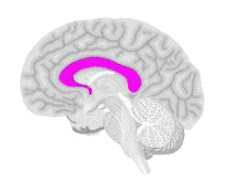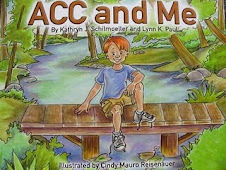GUEST BLOG POST
Literacy and Communication Skills in Kindergarten (Back to the Beginning)
by Alexandra Berube, bostontutoringservices.com
I think this is why some behaviors of Agenesis of the Corpus Callosum may be confused with Autism. It looks like the student can’t express themselves, as they regress to either younger behaviors or more ‘primitive’ behaviors like snarling. But they can learn behaviors that will serve them better in social and academic situations, and it’s often up to them to decide if they want to respond or not. As I wrote before, Max would act out, or refuse to communicate or do activities, but he could do them. They were not beyond his capacity. I certainly wouldn’t want to put any blame on a child by saying they ‘choose’ not to respond, but by that I mean, they do have the capacity, it just takes time and a strong sense of trust and comfort level to make them want to do so (as well as emotional maturity, of course). I can only use my experience to state my opinions on this matter, of course--I would not want to generalize onto any students with more limited capacities. I just think that students need time to see what they can do, and it shouldn’t be assumed that something is beyond their ability. This goes for all students.
Moving onto literacy, we practiced a great deal with rhymes, because Max had difficulty recognizing rhymes aurally and generating rhymes orally. He performed much better when asked to match pictures of rhyming objects, because the visual cue allowed him to better process the information. I had small phonics objects, and would use them to give him a visual clue (a cat and a hat, a ship and a clip, etc). This helped quite a bit, and when we did word family activities with pictures of objects (match everything in the ‘at’ family, match everything in the ‘um’ family), he was able to do much better than with just the aural clues. I wanted him to continue to improve in his ability to aurally recognize rhymes, as I had thought that this skill would help him in his reading. But it didn’t work that way.
I had been taught in Graduate School that you needed phonological and phonemic awareness to be able to read. I was concerned his lack of rhyming ability would hold him back. But it didn’t, at all. His reading improved much faster than his aural rhyming skills. Max came into Kindergarten knowing all of his letters and letter sounds, with a solid foundation of how to sound out and decode words. He knew that he had to break down a word and sound out each part in order to read the word. So his reading skills improved rapidly. In turn, the more he learned word families, the more he ‘knew’ what rhymed. His ability to aurally detect rhyme only increased as he learned word families through visual clues and from reading words. He could rhyme once he could read.
In writing skills, with the work Max had been regularly doing with his OT [Occupational Therapist], along with much practice, Max gained the ability to express himself with words and pictures. In September, when asked to write any letter, Max said he could not do it, and did not try. I would have him trace my letters or make lines from one dot to the next in order to form letters. A large part of this was that it is physically challenging for him to use a writing tool, and therefore it is understandable that he would resist the work. By December of Kindergarten, Max was forming letters on his own in order to write words. Similarly, when we began Kindergarten I could not get him to draw any representational figures. He would draw squiggles and circles all over the page, saying he could not draw anything. By December he regularly created representational images on his work. This huge leap shows in some ways that he had the ability all along, and just needed a way to get it out of him. Once he got that from the OT, it was like breaking open a shell so that we could see what had been inside him all along.
*Name has been changed.
Max worked very hard in the first few months of Kindergarten to make strides in his ability to communicate verbally. As I mentioned previously, Max’s ability to communicate his needs was an area in which we put in a great deal of work. At times, when he got overwhelmed, he would shut down and choose not to listen to teachers who are trying to help him. When upset, *Max would become inconsolable, and have trouble recovering from setbacks. Especially in social situations, such as if someone broke a building of his, he retreated into self-consoling behaviors such as crying and rocking. He would growl or snarl at a peer if he or she upset Max in this way.
About Alexandra Berube

Alexandra is the Managing Director of Boston Tutoring Services, a tutoring company that offers one-to-one in-home tutoring in Massachusetts. She is also a former Kindergarten teacher who also tutors students in grades
K-8, in all subject areas, including test preparation.
Note: "aural"/"aurally" means: relating to the ear or to the sense of hearing.
Would you like to print a copy of this article?
Alexandra has given me permission to convert her article to a pdf format for printing, at the link below:
Literacy and Communication Skills in Kindergarten (Back to the Beginning) - printable version
Watch for an upcoming guest blog post here soon from Teacher/Tutor, Alexandra Berube.
As a teacher and professional tutor, Alexandra plans to share more future guest blog posts here--where she will reveal additional insight into her student who has Agenesis of the Corpus Callosum and how it affects the student's education, and she will also be sharing teaching strategies that have helped her student.**
please be advised: some children who have Agenesis of the Corpus Callosum are also diagnosed with Autism, Autism Spectrum Disorder (ASD) or Pervasive Developmental Disorder-Not Otherwise Specified (PDD-NOS).
ADDITIONAL INFORMATION AND RESOURCES:
Making a Rhyming Basket - Montessori video:
Rhyming Pictures Printable Game
Note: to download free full-size printable version:
1. click on link above,
2. then on left-hand top of page, click on "File"
3. and then click on "Download"
courtesy of the
First Grade a la carte blog.
Or try this printable game with real photograph pictures:
Rhyming Words/Photographs Printable Game
Tip: check out Pinterest for more rhyming words ideas (and other educational ideas, too). You could truly get lost exploring the awesome ideas on Pinterest!
And for activities to Match Word Families with Pictures, consider exploring this idea:

Note: product appears to contain cards only and does not include the plastic pocket chart holder (as pictured).
In the ACC Reading and Comprehension document you can read about other children who have ACC. A few examples include:
Parent of 5 year old child writes:
"She does not get when we give her a list of words to pick out the one that rhymes, she will either pick the one with the same beginning sound or letter or pick a word at random that she knows. If we give her the word bat; a list of words such as cat, ball, dog, hand-she will pick ball because bat and ball go together."
Parent of 12 year old child writes:
"Lexie always struggled with reading. Our first sign of trouble was the fact that she never could rhyme. It was the strangest thing! But as school began I noticed she had such a hard time with those little books. Every single word was as if she had never seen it before...page after page. The same few words would repeat but she would not recognize them. So with each page she struggled just as much as the page before. By first grade we bought Hooked on Phonics.
It interested Lexie so she did it. Loved it. But still she really could not make the jump from the program to real books. Word families meant nothing to her. RAT CAT SAT........Lexie would say HOUSE.....Really? HOUSE???? Again, the rhyming thing never worked for her and that is what word families are. Second grade more of the same. She was reading, I guess. At about a Kindergarten level. No AR yet of course. We did dyslexia programs through the district. She would do FINE according to her dyslexia teacher. By 3rd grade she had graduated out of the program. I kept saying "But she really can't read!" The state assessment finally showed everyone how much she struggled. Of course she failed the state assessment. Her reading comprehension was/is terrible. She is in 6th grade. Reads about on a 3rd grade reading level. She is in regular classes with accommodations. Making straight A's."
Kathyrn Schilmoeller, Ph.D., in her September, 1999 article titled, Educational Suggestions For Children With ACC: A Beginning, wrote:
"People with ACC tend to absorb far more information than they can demonstrate to others in an educational setting by writing or verbalizing. Teachers need to be creative in finding ways for the child to show what he or she has learned. For example, a five-year-old child with ACC was asked to draw a picture of a man. He took a crayon and scribbled across the page. The teacher came to the conclusion that the child had no concept of what a person looked like. However, shortly afterwards when the child was provided different shapes of paper and pieces of masking tape, without prompting from an adult, that same child produced a face complete with eyes, nose, and mouth, and announced, "This is me." The child clearly understood what a face looked like. He simply could not manipulate a crayon well enough to demonstrate his knowledge. Similarly a few years later, this same child "wrote" "I LOVE YOU" with blocks without being prompted. His parents were startled by his skill in "writing" this message because at that point no one realized he could spell that well."
**Note: Agenesis of the Corpus Callosum has a very wide range of effects--ranging anywhere from no symptoms--or mild learning disabilities--to severe mental and/or physical challenges. It can sometimes also be seen with other medical conditions, genetic syndromes, chromosomal anomalies and more. Every person with ACC can present differently in terms of their development, cognitive abilities and educational needs.
Each child who has ACC is a unique individual with their own abilities, weaknesses, challenges, motivations, strengths, as well as their own style of learning.
























No comments:
Post a Comment
I am very interested in reading your comments and
look forward to hearing from you. Thank you.